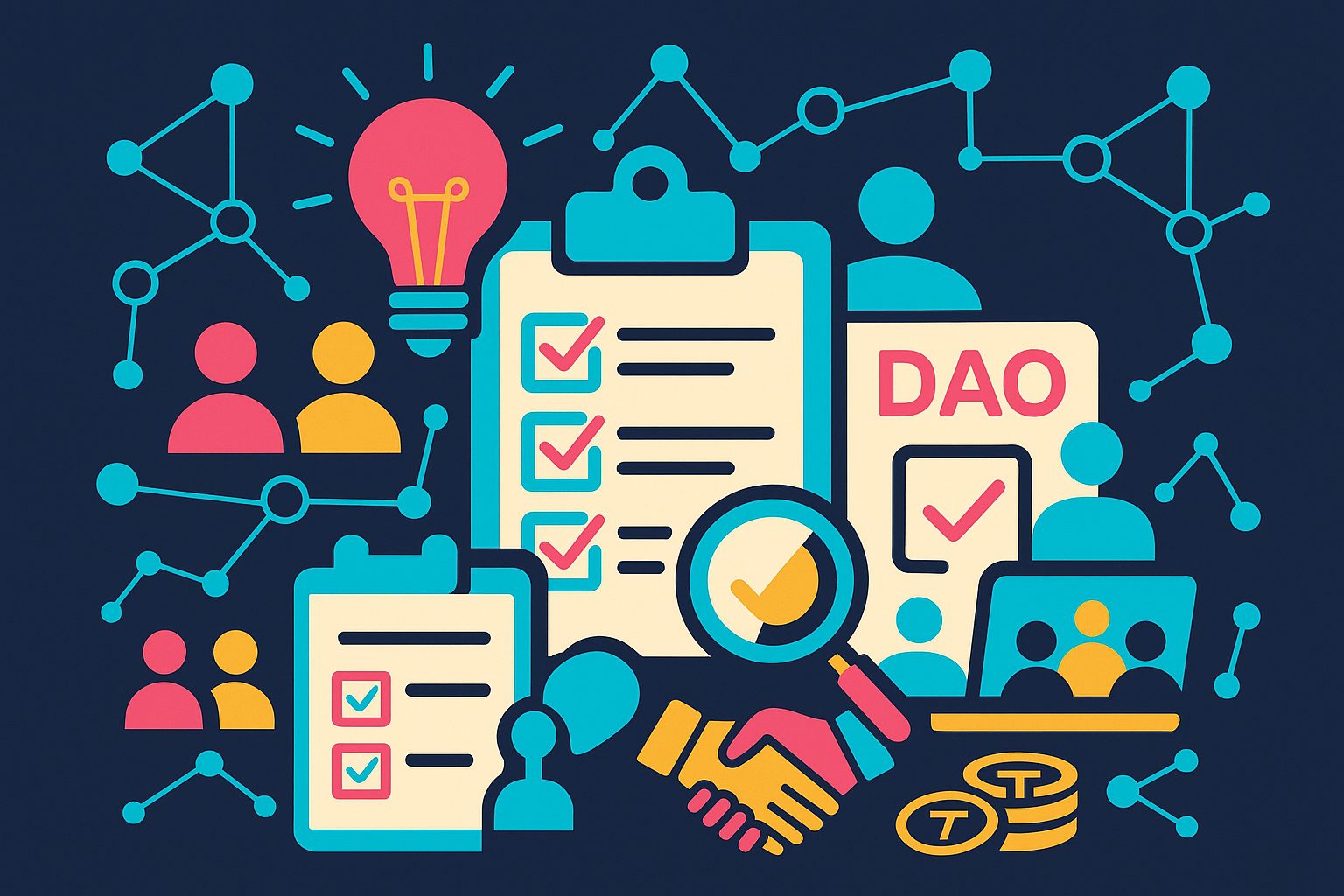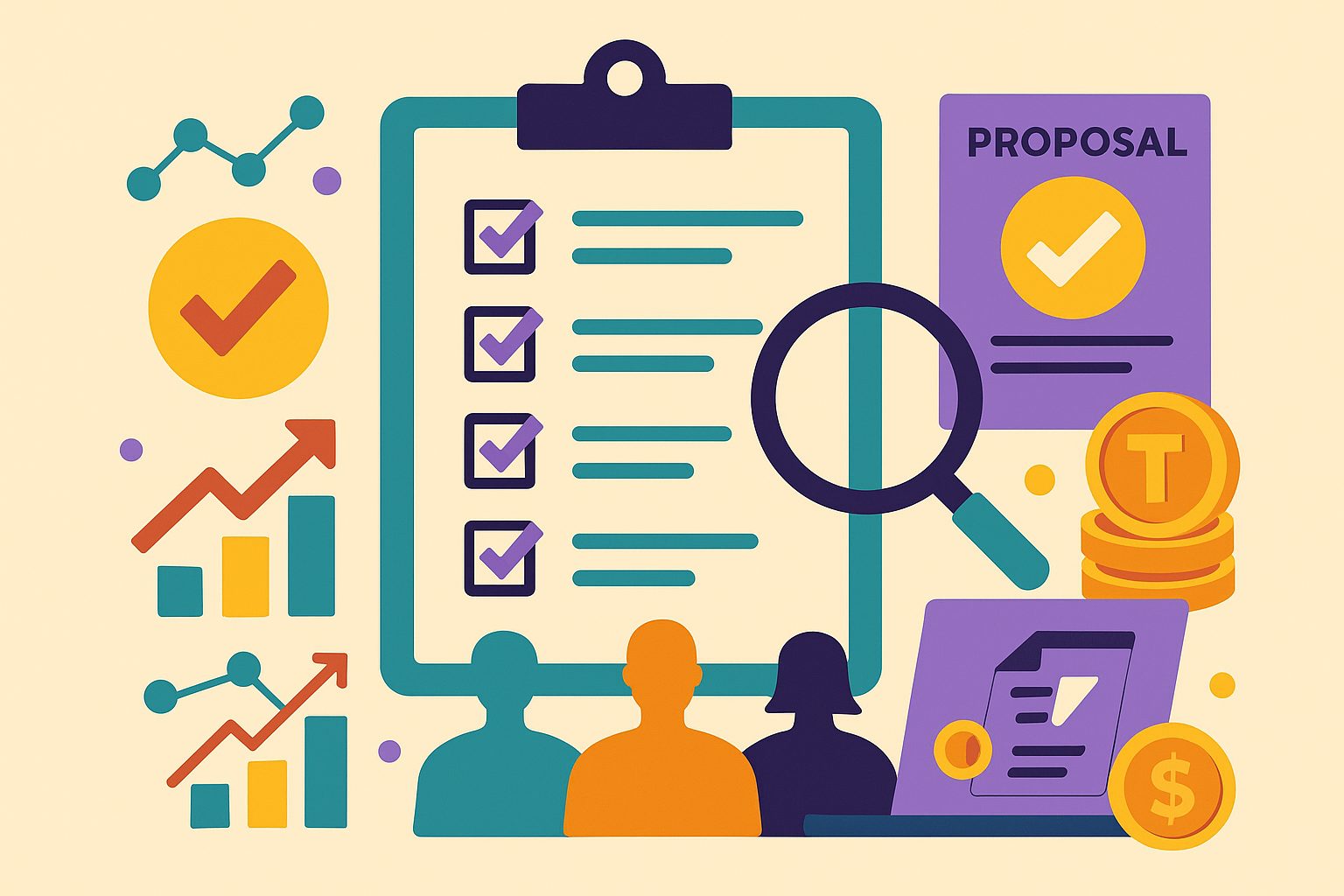Your Gateway to Governance Mastery
Decentralized Autonomous Organizations (DAOs) thrive on the collective wisdom of their voters, yet navigating governance proposals can feel like charting untested waters. Insider savvy starts with embracing the spirit of collaboration and accountability that underpins every DAO. By treating each proposal as a strategic opportunity rather than a perfunctory checkbox, you amplify your voice and cement your reputation as a thoughtful steward. These tips, drawn from veteran DAO participants and on-chain analysts, will transform your voting process into a deliberate, high-impact practice—equipping you to shape protocol upgrades, influence treasury allocations, and guide community-driven innovation.
Illuminating the Governance Framework: Reading Between the Lines
Before you cast a single vote, immerse yourself in the DAO’s governance architecture. Governance frameworks can vary dramatically—from token-weighted ballots to reputation-based delegation—so it’s essential to pinpoint where decision-making power truly lies. Start by dissecting the DAO’s charter or whitepaper: are proposals subject to a simple majority, or does your community employ quorum thresholds and veto mechanisms? Identify key milestones in the voting cycle, such as proposal submission windows, debate periods, and execution timelines. Mapping these procedural landmarks reveals opportune moments for engagement, giving your insights maximum visibility. By mastering the governance blueprint, you elevate your voting strategy from reactive to proactive, aligning your contributions with the DAO’s foundational rules.
Vetting Proposers and Project Teams: The Human Element
Behind every governance proposal are individuals or working groups with unique motivations and expertise. Conduct a thorough background check on the proposers: review their past contributions, code commits, and governance track record within this and sister DAOs. Track their involvement in related projects, industry affiliations, or academic research that lends credibility to their vision. Pay attention to communication style—teams that publish clear rationale, address counterpoints transparently, and provide timely updates often deliver higher execution fidelity. Conversely, proposals lacking visible authors or shrouded in vague language may signal risk. By anchoring your analysis in human context, you differentiate proposals rooted in genuine community need from those driven by narrow interests or short-term gains.
Decoding Tokenomics and Voting Mechanics: Power in Numbers
A savvy DAO voter knows that not all votes carry equal weight. Tokenomics—the rules governing token supply, distribution, and utility—directly shape your influence. Scrutinize the proposal’s impact on token holders: Will it introduce new token emissions or adjust staking rewards? Does it alter governance token utility or delegate incentives? Calculate potential dilution effects by reviewing vesting schedules, emission caps, and treasury allocations tied to the proposal. Simultaneously, grasp the nuances of the voting mechanism: some DAOs employ quadratic voting to curb whale dominance, while others enable vote delegation to streamline decision-making. Understanding these numerical levers empowers you to anticipate power shifts, craft persuasive arguments, and calibrate your voting power for maximum impact.
Uncovering Hidden Pitfalls: Spotting Ambiguity and Risk
Even well-intentioned proposals can harbor unintended consequences. Veteran voters learn to read between the lines, identifying ambiguities and latent risks. Does the proposal include vague language around budget limits or vague timelines that could enable scope creep? Are there dependencies on off-chain oracles, third-party integrations, or cross-chain bridges that introduce security vulnerabilities? Examine the code snippets or smart contract addresses linked in the proposal, and if possible, consult independent audit reports for red flags. Engage core developers or risk analysts to clarify complex technical clauses. By unearthing potential pitfalls early, you position the DAO to refine proposals before voting, safeguarding the protocol’s integrity and preserving community trust.
Harnessing On-Chain Data: Insights from the Blockchain
On-chain analytics convert raw transaction data into strategic intelligence. Veteran DAO participants leverage dashboards that track voting turnout rates, token holder distributions, and proposal completion metrics. Monitor wallet address clustering to detect whale voting blocks that could sway outcomes, and examine historical vote patterns to spot community fatigue or fervor cycles. Assess treasury movements in parallel, correlating funding spikes with governance activity. Specialized tools also reveal sentiment signals—such as gas usage spikes in governance contracts—that hint at behind-the-scenes mobilization. By weaving on-chain data into your decision-making process, you transition from anecdotal assessments to evidence-driven strategies, ensuring your votes align with both numerical trends and communal undercurrents.
Engaging Early: Shaping Proposals in the Debate Phase
Influence begins long before the snapshot moment. The debate phase offers a golden window to refine proposals, align incentives, and address community concerns. Join discussion forums, governance chat channels, and working group meetings to share your insights and ask pointed questions. Frame your feedback constructively—highlight strengths while proposing actionable improvements, such as clarifying budget breakdowns or tightening execution timelines. Early engagement not only elevates the proposal’s quality but also raises your profile as a collaborative thinker, increasing the likelihood that others will heed your perspective when the vote arrives. Remember, governance is a dialogue, and shaping the narrative during the debate phase yields outsized dividends at the polls.
Crafting Persuasive Commentary: Elevating Your Voice
When the discussion shifts to formal commentary, your writing becomes your rallying cry. A compelling commentary weaves data, narrative, and vision into a cohesive argument. Begin with a succinct summary of your stance, then layer in quantitative evidence—such as on-chain metrics or comparative case studies from analogous DAOs—to substantiate your position. Address counterarguments head-on, demonstrating empathy for dissenting views and proposing compromise solutions where feasible. Link to external resources—whitepapers, audit reports, or governance precedent—to empower fellow voters to dive deeper. By delivering polished, well-researched commentary, you not only sway undecided participants but also cement your reputation as a governance thought leader.
Timing Your Decision: Reading the Snapshot Window
Not all voting windows are created equal. Snapshot mechanisms often capture votes at a specific block or timestamp, and gas wars or network congestion can disrupt last-minute participation. Plan your voting activity with precision: identify the snapshot block number in advance, monitor network fee estimates, and consider using transaction batching or Layer 2 solutions to reduce slippage. For DAOs with rolling governance stacks or continuous voting models, align your vote with periods of high voter turnout—avoiding low-engagement weekends or overlap with competing proposals. Strategic timing ensures your vote is both counted and visible within governance dashboards, maximizing your effect on the final tally.
Forming Alliances: Coalition-Building for Collective Impact
Individual votes matter, but collective action changes the game. Identify fellow DAO members whose expertise or values align with yours—be they smart contract auditors, ecosystem builders, or long-term holders—and forge working coalitions. Pool your research to publish joint position papers, host AMA sessions, or co-author blog posts that articulate shared viewpoints. Collaborative endorsements signal to the wider community that a proposal enjoys diverse, cross-functional support, lending it greater legitimacy. When building alliances, prioritize transparency: publicly disclose your coalition’s objectives, decision-making criteria, and conflict resolution processes. A well-coordinated coalition can tip the scales on high-stakes governance outcomes while fostering long-term relationships that strengthen the DAO’s social fabric.
Mastering Delegations and Proxies: Amplifying Your Voice
In DAOs that support vote delegation, entrusting your stake to a trusted proxy can magnify your influence—especially for complex proposals requiring specialized knowledge. Select delegates based on proven governance contributions, transparent reporting practices, and alignment with your core principles. Regularly audit your delegate’s voting history, and maintain open lines of communication to provide feedback. If your proxy drifts from your expectations, reassign your delegation to safeguard your stake. For high-profile proposals, consider forming proxy voting pools that combine resources without relinquishing oversight, enabling smaller token holders to punch above their weight. By mastering delegation dynamics, you turn passive holding into strategic partnership, ensuring your voting power resonates where it matters most.
Tracking Implementation and Accountability: Beyond the Vote
A successful governance proposal doesn’t end with a green checkmark—it begins. Post-vote, monitor the execution of on-chain actions: contract upgrades, fund disbursements, and protocol parameter changes. Scrutinize developer pull requests, testnet deployments, and audit validations to ensure alignment with the approved proposal. If deadlines slip or deliverables fall short, leverage governance forums to call for status updates or propose remedial measures. Active post-vote oversight reinforces community standards and deters complacency, ensuring that proposals translate into tangible improvements. As an insider DAO voter, your commitment to accountability underlines the social contract that makes decentralized governance both powerful and resilient.
Cultivating Continuous Growth: Adapting to Evolving Governance
DAO governance is far from static; new voting models, on-chain tooling, and cross-DAO alliances continually reshape the landscape. Cultivate a learner’s mindset by attending governance workshops, subscribing to DAO newsletters, and participating in cross-platform working groups. Experiment with emerging protocols—such as conviction voting or time-weighted staking—and evaluate their efficacy in pilot proposals. Share your findings as case studies, sparking conversation around best practices and iterative refinements. By committing to continuous growth, you ensure your insider tips remain on the cutting edge, and you contribute to an evolving body of governance knowledge that benefits the entire decentralized ecosystem.
Steering Tomorrow’s DAO Ecosystem: Your Role as a Thought Leader
As you integrate these insider tips—dissecting frameworks, vetting teams, decoding tokenomics, and championing accountability—you emerge not merely as a voter but as a catalyst for progress. Your strategic approach elevates every proposal you touch, shaping outcomes that resonate with collective aspirations and technical rigor. In doing so, you set a shining example for new DAO participants, fostering a culture of informed engagement, collaborative problem-solving, and resilient innovation. The future of decentralized governance depends on voters like you—insiders who wield data, dialogue, and dedication to guide their communities toward shared success. Step into this role with confidence, and watch as your votes catalyze enduring impact.




